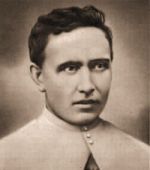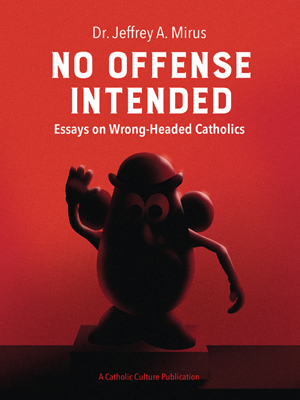Catholic World News News Feature
Unknown cardinal breaks secrecy, describes conclave September 23, 2005
Breaking his oath of secrecy, a member of the College of Cardinals has given a detailed description of the conclave that elected Pope Benedict XVI, an Italian television network has reported.
In an evening news program that aired on September 22, TG2 television reported that a cardinal, speaking on condition of anonymity, had given a full account of the papal election to the Italian journal Limes.
The unknown cardinal supposedly confirmed what Vatican-watchers had already concluded: that Cardinal Joseph Ratzinger was elected on the fourth ballot of the conclave. He also provided the results of that ballot, saying that Cardinal Ratzinger won 84 votes, with 26 for the Argentine Jesuit, Cardinal Jorge Mario Bergoglio.
At the start of a papal conclave, all of the cardinal-electors swear a solemn oath to preserve the absolute secrecy of the proceedings. But journalists had previously persuaded some prelates to offer a few clues about the proceedings.
In an article entitled "How we elected Pope Ratzinger," journalist Lucio Brunelli presents what he claims is an eyewitness account, furnished by an anonymous cardinal, of the 2-day conclave that took place April 18 and 19.
It is impossible to determine the accuracy of the account presented by Limes. Since the magazine does not identify the prelate who provided the report, there is no guarantee that the story is not a hoax. If it is indeed the account of a cardinal who participated in the conclave, the credibility of this eyewitness is severely undermined by his willingness to violate his oath. Still, sources at the Vatican note that the details of the story seem to match all of the available evidence about the conclave.
The cardinal recalls that when the 115 cardinal-electors entered the Sistine Chapel to begin their deliberations, they first swore the oath of secrecy, using a formula prescribed by Pope John Paul II in the apostolic constitution Universi Dominici, which sets the procedures for a papal election. After taking the solemn vow collectively, the cardinals then each swore the same oath individually, before the doors of the Sistine Chapel were closed.
Nonetheless, in spite of those vows, the Limes story says that the anonymous cardinal has supplied an exact count for each ballot of the election.
On the first ballot, taken in the evening of April 18, the story says that Cardinal Ratzinger won 47 votes. The other cardinals receiving ballots were Cardinal Bergoglio of Buenos Aires, with 10; Cardinal Carlo Maria Martini, the retired Archbishop of Milan, with 9; Cardinal Camillo Ruini, the vicar for Rome, with 6; Cardinal Angelo Sodano, the Secretary of State, with 4, Cardinal Oscar Rodriguez Maradiaga of Tegulcigalpa, with 3; and Cardinal Dionigi Tettamanzi of Milan, with 2.
The second ballot, conducted in the morning of April 19, found Cardinal Ratzinger with 65 votes, and Cardinal Bergoglio with 39. Cardinal Sodano held 4 votes, and 11 other votes were dispersed among various other prelates. The total of 65 for Cardinal Ratzinger gave him a majority, but remained short of the two-thirds necessary for election.
On the third ballot, the same morning, Cardinal Ratzinger's total rose to 72, according to the report of the anonymous cardinal. Cardinal Bergoglio had 40 votes, and the other 3 votes were scattered. On the fourth ballot, taken in the afternoon, Cardinal Ratzinger reached 84 votes-- well above the 77 needed for election.
The appearance of white smoke from the chimney of the Sistine Chapel in the afternoon of April 19 told observers that a new Pope had been elected. And the timing of the announcement led most Vatican-watchers to conclude that the new Pontiff had been chosen on the fourth ballot. The Vatican had disclosed in advance the schedule for voting during the conclave, with two votes scheduled every morning and two more in the afternoon. The afternoon session of the conclave had allowed time for only one ballot before the white smoke appeared.
The Limes account contradicts previous stories-- based on less detailed leaks from conclave participants-- suggesting that Cardinal Martini was the main rival to Cardinal Ratzinger during the conclave. According to the anonymous cardinal cited by Limes, the former Archbishop of Milan never won more than 9 votes.






